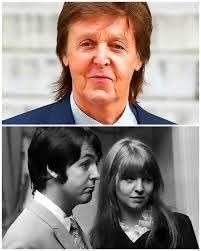In the early hours of 1964, Paul McCartney stirred awake in a snug attic room at the Wimpole Street home of his girlfriend, Jane Asher. As the morning light crept in, he found himself humming a melody so vivid and haunting that it seemed impossible it had sprung from his own mind. The tune felt too polished, too moving, to be something he had invented. Uncertain, he hurried to the piano and began to play, determined to capture the fleeting notes before they vanished.
For weeks afterward, McCartney carried the melody with him wherever he went, sharing it with friends, bandmates, and music professionals, always asking if anyone recognized it. He approached the studio team at Abbey Road and even his own bandmates—Ringo Starr and George Harrison among them—but none could place the tune. Everyone was baffled. Still, Paul remained skeptical, convinced it must belong to someone else. “It was so perfect, I couldn’t believe it was mine,” he would later say. He filled in the gaps with playful placeholder lyrics, starting with the whimsical line, “Scrambled eggs, oh my baby how I love your legs,” as he waited for inspiration to strike.
Eventually, as no one claimed the melody, McCartney allowed himself to accept that it was truly his own—a gift from his subconscious, delivered in a dream. When The Beatles began work on their album Help! in 1965, he revisited the song, this time searching for words that matched its emotional weight. The lighthearted “Scrambled Eggs” gave way to something deeper and more reflective. The opening line, “Yesterday, all my troubles seemed so far away,” set the tone for a song that explored heartache and longing, a far cry from its earlier, lighter version.
Unlike many Beatles tracks, “Yesterday” was notably pared down, featuring just Paul’s voice, an acoustic guitar, and a string quartet—a sound that stood apart from their usual energetic ensemble. The recording session took place on June 14, 1965, in Studio 2 at Abbey Road, with producer George Martin crafting a string arrangement that lent the song a classical grace rarely heard in pop at the time. When the final notes were laid down, McCartney stood back, uncertain how audiences would receive such a personal, stripped-back offering.
Initially, “Yesterday” wasn’t released as a single in the UK, as there were doubts about presenting it as a Beatles song. In the US, however, Capitol Records launched it in September 1965, and it soared to the top of the charts, holding the number one spot for four weeks. Its legacy only grew with time, as more than 2,000 artists recorded their own versions, making it one of the most covered songs ever written.
Reflecting on the song’s journey, McCartney often described it as something that was given to him—a melody that arrived fully formed, as if from another realm. The story of “Yesterday,” from its dreamlike inception to its transformation from playful ditty to timeless ballad, speaks to a creative process that transcends logic.
On that morning in London, a melody waited for a voice. Paul McCartney answered the call, and the world embraced a song that would never be forgotten.
